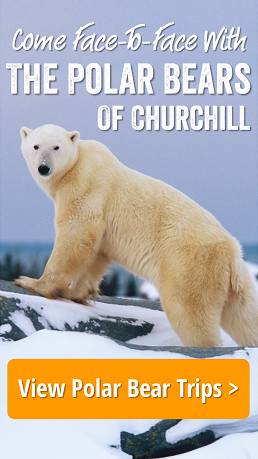by Steve Selden | Feb 13, 2015 | Churchill Photography
Check out the photo of the month from Churchill. Natural Habitat guide Justin Gibson used just the right exposure settings to capture the lights and stars at once. The foreground boreal forest gives great perspective and makes this an amazing shot!

Northern Lights above Churchill, Manitoba. Justin Gibson photo.
Check out the northern lights photo tours this winter in Churchill.
by Steve Selden | Feb 12, 2015 | Tour News
Travelers to Churchill on Natural Habitat’s northern lights tours have been enjoying clear skies and pristine, powdery white snow in Winnipeg as well as in Churchill these days.
The Hudson Bay and Churchill River are frozen solid and aurora borealis displays have been extraordinary over the frozen tundra around Churchill. This ice coverage chart from the Canadian Ice Service shows the extensive coverage of thick pack ice.

While nights in Churchill are consumed with searching out and viewing aurora borealis, days and early evenings leading up to these exciting excursions are filled with natural and cultural activities unique to the isolated village of Churchill.
Guide Karen walker’s group had some fun experiences in Thompson en route to Churchill. A Heritage Museum visit and a walk along the Burntwood River set up a thrilling visit to frozen Pisew Falls…always the highlight of the journey through the nickel belt.
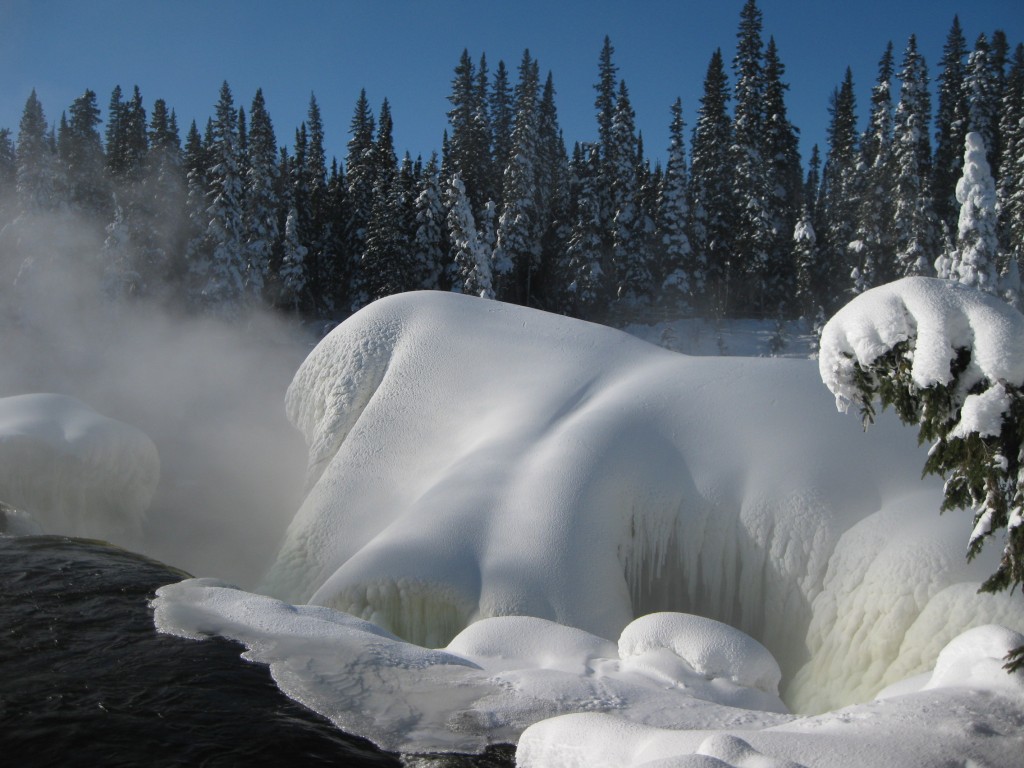
Dog sledding with Churchill River Mushers or Wapusk Adventures gives everlasting memories from an experience of a lifetime. Dogs crying with enthusiasm and the stabbing cold seem to “burn” a memory in one’s mind forever. Karen’s group went on an extended run winding in and out of the boreal forest. Travelers spent some time in Kelly’s trapper’s tent and heard stories of the north over coffee or hot chocolate.

Dogsledding in Churchill. Joseph Lin photo.
The optimal night of northern lights in Churchill was a swirling display of greens culminating in a circular pattern over the Hudson Bay. Each night had aurora though this particular night was the pinnacle of the trip.
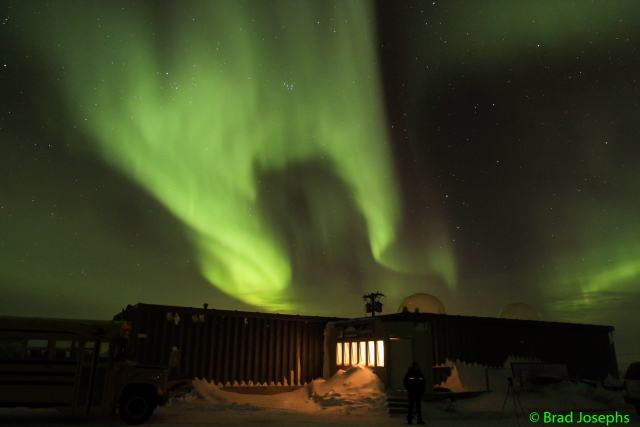
Aurora over the “aurora domes”, a prime indoor spot to photograph the lights. Brad Josephs photo.
Another activity out at the Churchill Northern Studies Center involved snow sampling and analyzing the snowflake from its inception to it becoming a part of the snow pack. Igloo building instruction also is taught by some local experts and the group returns the following night to photograph the igloo with aurora overhead.
by Steve Selden | Apr 19, 2014 | Churchill News
The Hudson Bay is packed solid with thick ice and seems to be supporting a healthy seal-feeding season for polar bears. Extreme cold and stormy weather has been pervasive throughout the region this year and should lead to a extended hunting season for bears on the ice surface. Here is the link of the most recent Hudson Bay ice chart from Environment Canada Ice Survey.
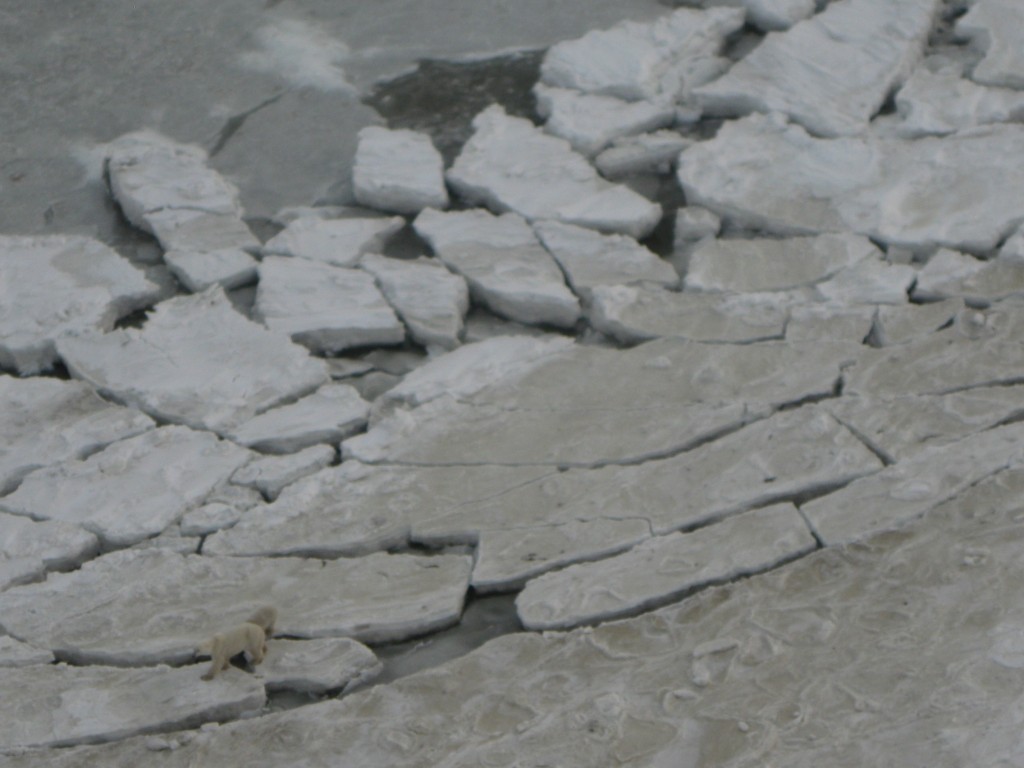
Ice accumulating on the Hudson Bay. Karen Walker photo.
Polynas up in the Hudson Straits harbor herds of beluga whales waiting for ice to break up and allow for their spring migration. These open water leads are formed either by warmer currents upwelling from below and keeping an area adjacent to the sea ice unfrozen or from currents and wind conditions that move through the region. They are vital to the survival of narwhals and beluga whales that do not migrate south in the winter.
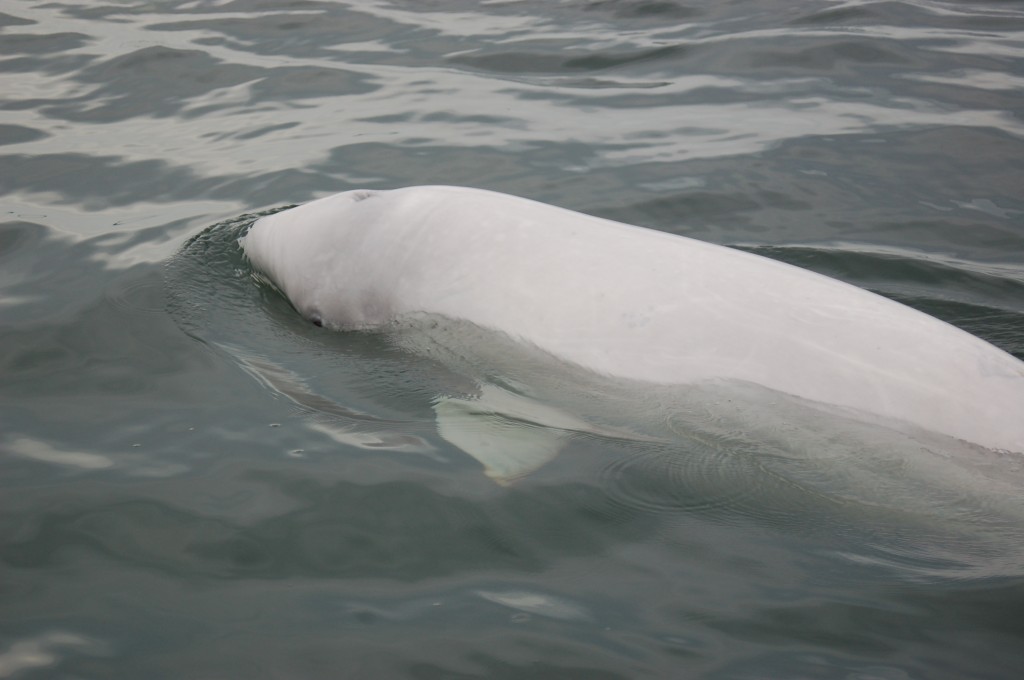
Beluga whale on the surface. Steve Selden photo.
When the belugas arrive in early summer, almost 2,500 animals will inhabit the coastal waters near Churchill including all the rivers and inlets there. At high tide, the Churchill River becomes a calving estuary stretching nearly eight kilometers up river. These relatively warm waters will make for a calm calving process and infancy. When newborn, calves are a darker almost slate gray. This color, opposing the milky white of the adult stage, is thought to be a subtle camouflage trait for the darker water they inhabit. As they grow and become whiter, the color is camouflage as well when living up north amongst the sea ice of near color. Since adults are more alert and more adept at detecting and eluding predators. Young grey -colored whales enjoy the guardianship and protection of their mothers…swimming tightly in their slipstream.

In summer Churchill has many treasures. Guide Sandra Elvin speaks to a group. Steve Selden photo.
The summer in Churchill is a daily reveal of mystery and treasure hidden in the willows and wildflowers of the tundra and the pre- cambrian rolling boulders of the coastal barrier. Each foray into the wild can produce anything the imagination can bring to mind. A beluga whale carcass nestled in the sea grass out at Halfway Point, a polar bear wandering through the boreal forest looking for some eggs from nesting birds, or even a black wolf lumbering in and out of boggy areas near the town weir out along Goose Creek road. As the summer moves forward, polar bears can be spotted along the coast as they arrive from the ice floes in the bay. Each day, each season produces something new and unexpected. Nothing compares to Churchill in the summer….the pace slows down and time seems to come to a standstill. Of course if you like the chance seeing 40 or more polar bears in a day fall might be the time to visit as well. Natural Habitat Adventures has a wide variety of trips that fit into your travel plans.
by Steve Selden | Mar 27, 2014 | Tour News

Natural Habitat travelers in Churchill. Brad Josephs photo.

Covered. Photo Brad Josephs.

Crossing tundra. Photo Brad Josephs.

Northern lights above a warm van. Photo Brad Josephs.

Young and bundled. Brad Josephs photo.

Aurora boreal forest. Brad Josephs photo.















